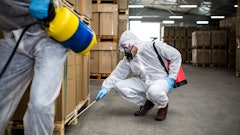
Since 2000, for all railroads, on-duty fatalities declined 71% and reached an all-time low in 2023, according to Association of American Railroads. For Class I railroad employees, the rate of injuries and fatalities has dropped by 63% since 2000, reaching an all-time low in 2023.
Although great strides have been made, the railroad industry still has a way to go improving safety, because even one injury is one too many.
To achieve safety improvements, developing a “Safety Culture” is the key to nurturing safer work environments.
Safety starts from the top, beginning with prioritizing safety, setting goals, supporting a safety improvement plan; and then inspiring all employees to commit to the program.
Railroads and other industrial work environments are prone to safety risks, but don’t have to become hazards. To minimize risk and maximize safety, establish a “Safety Culture” to achieve critical benefits such as:
- Saving lives.
- Preventing injuries.
- Reducing time off lost days due to injury.
- Attracting more employees by promoting a safer environment.
- And other benefits.
To create a “Safety Culture,” build a program that includes the following components:
Prioritize safety, period. Starting with management, but pervasive throughout the organization, safety must be a top priority because employees are a priority.
Develop a plan and goals around your safety vision. A “Culture of Safety” starts with a vision, but a vision alone won’t make things happen. A plan with goals is critical in providing a roadmap with the steps and resources needed to achieve that vision.
Communicate the plan throughout the organization. Develop a communications strategy designed to inform each employee of the plan and goals, and to illustrate the importance of this mission to the entire organization. Reinforce this communication frequently.
Institute safety training programs. Training provides the safety skills and awareness employees need to reach the company’s safety goals. Training also communicates self-esteem as each employee appreciates his or her role in making the environment safer for everyone.
Track and communicate goals and results. Success builds upon success. As results are communicated, the entire team will feel that they are a part of the improvement, deepening their commitment and attachment to the culture. Reward exceptional results and communicate stories about your organization’s “safety heroes.”
Reflect on results and update your plan. At least once a year, take stock of your “safety culture.” Take into account what you have achieved so that you can then evolve your plan going forward.
Safety can never rest because the potential risks never rest. A “Safety Culture” initiative prioritizes employees and helps companies strive to create a safer environment.



















